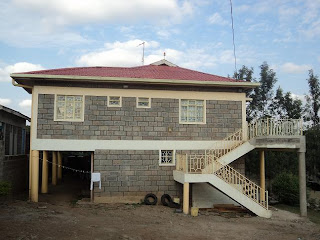Table Mountain
Table Mountain is the icon of Cape Town, recently being voted a new 7 Wonder of Nature. It’s a pretty impressive site, located right in the middle of the city.
 |
| Table Mountain - View from Company's Garden |
Dine and I arranged a trekking guide - Paul Harding - to climb Platteklip Gorge with us. We usually like to go trekking by ourselves, but we heard plenty of people advising us against it, as the weather in Cape Town can change rapidly and the mountain can be covered with clouds very quickly. We heard from local friends, as well as from Paul, that some tourists had to be rescued after getting lost or stuck on the mountain, so we decide not to take a chance. Paul is a great guide and we highly recommend him (his website http://www.capeguidedwalks.co.za/).
 |
| Clau, Paul and Dine |
Platteklip Gorge is a pretty steep climb, but the 3 hours or more to reach the top of the mountain was worthy once we saw the amazing views awaiting for us.
 |
| Taking in the view |
There is a cable car taking people up and down the mountain, but being pretty feet we preferred to do it the hard way, walking all the way back, which was a lot quicker, taking us about half of the time compared to the climb up. I wish this was the truth, but in reality, the cable car was closed for maintenance for a week. This was the only reason we walked back on foot. J
 |
| Cable Car at Table Mountain |
We spotted ome very cute wild life as we trekked through the mountain. The bird on the photo looks like a humming bird.
 |
| Bird life at Table Mountain |
There are also other birds preying on the tourist food.
 |
| Birds waiting for food at the top of the mountain |
The 'dossi' or as they call them here the ‘rock rabbit’ looks like a guinea pig. They are not shy and come very close to the tourists asking for food.
 |
| Rock rabbit |
Kirstenbosch Botanical Garden
Pretty much every single place Dine and I have visited in Cape Town is surrounded by colossal mountains and with Kirstenbosch Garden it was no different.
 |
| Kirstenbosh Botanical Garden |
This botanical garden is very unique due to the fact that it has only native plants. What was very interesting to me was to see that their native flowers are very similar, if not identical, to the native flowers in Australia. According to Paul (the trekking guide), some studies say that many millions of years ago Africa and Australia were part of only one continent and that’s why they have identical native flowers.
|
|
| Native Plant - Protea family |
 |
| Native Plant - Protea family |
A plant that I had never seen flowering before in Brazil or Australia was the Aloe. These plants can be seen everywhere on the streets of Cape Town shining with red, orange and yellow flowers.
 |
| Native Plant - Bitter Aloe |
There are pretty ‘wild’ guinea fowls spread throughout the gardens. They look like chicken but much better-looking. I gave them some bread before reading the sign ‘please do not feed the guinea fowls’ and they nearly jumped on me. I thought I was going to get some scratches but they were only after the food. Dine and I had a pretty good laugh.
 |
| Guinea Fowl |
 |
| Do not feed the birds! |
We visited a sculpture garden displaying some pretty impressive stone sculptures. Most of them for sale.
 |
| Sculpture Garden |
Camps Bay
According to our local friend Sheila, Camps Bay is the beach of the famous and the rich, with houses with ocean view worth millions of dollars. Camps Bay is considered one of the most beautiful beaches in Cape Town, bordered with very tall palm trees. On the main road facing the beach there are many posh restaurants and nice cafes, where Dine, Sheila and I enjoyed a nice lunch. The day was stunning with not a cloud in the sky!
 |
| Camps Bay |
Camps Bay is surrounded by the spectacular Twelve Apostles mountain range.
 |
| The Twelve Apostles Mountain Range |
The Old Biscuit Mill Market
 |
| The Old Mill Biscuit |
This market is near the Woodstock train station and so worthy a visit. It’s a very crowded market with a great atmosphere and iwith many locals and tourists coming and going all the time. There you can find everything there from delicious food, to clothes and all sorts of handmade stuff.
Our friend Nick works at The Old Mill Biscuit Market on Saturday mornings selling her cute handmade dolls.
 |
| Nick's handmade dolls |

























































